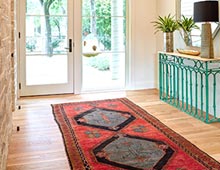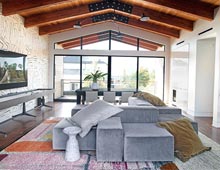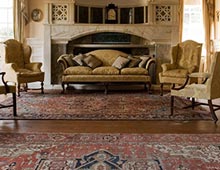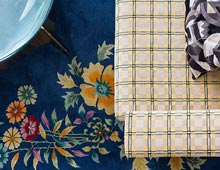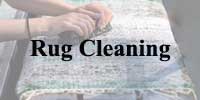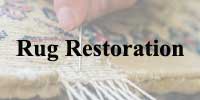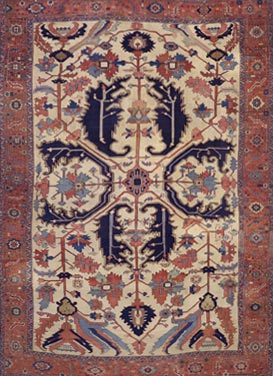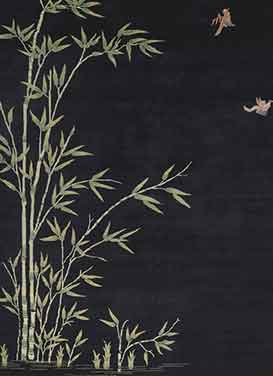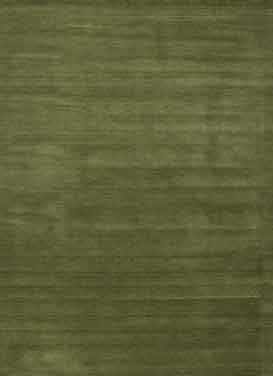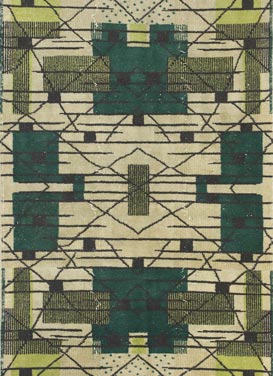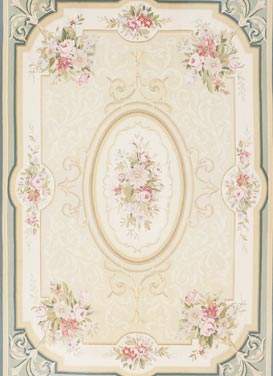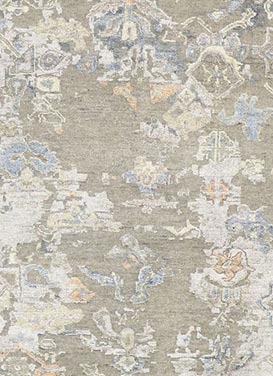FAQ
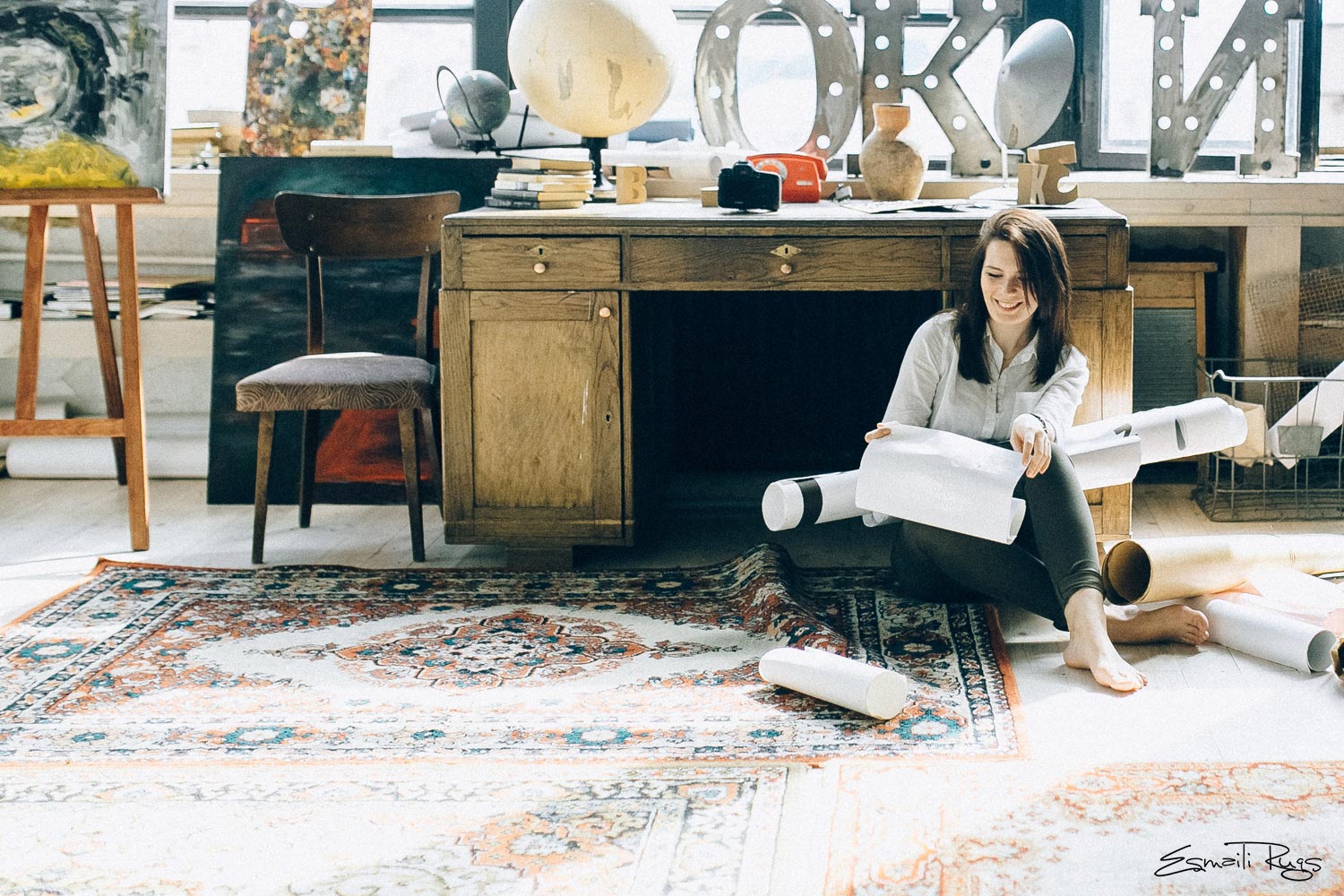 Frequently Asked Questions About Oriental Rugs
Frequently Asked Questions About Oriental Rugs
We have compiled a list of frequently asked rug questions to assist you in Oriental rug education. Questions regarding Oriental rug terminology, please visit our Oriental rug Glossary. If you do not see your question here, feel free to Contact Us.
What age classification is given to rugs?
- Old = less than 50 years old
- Semi-antique = 50-80 years old
- Antique = Above 80 years old
How do Oriental rugs get their name? Most Oriental rugs get their names from their country or city of origin.
How long does it take to make a rug? The length of time it takes to make a carpet is determined by the size, design and knot count of the carpet. A room size rug can take from 9 months to 3 years to complete- by three weavers dependent upon the detail and quality of the rug.
How long will my rug last? If it is properly cared for and cleaned periodically a good quality rug will last for generations.
What is meant by "knots per square inch?" Knots per square inch (kpsi) pertain to the number of knots in one square inch of a carpet. The more kpsi, the more detailed the design and the more expensive the rug so they say. Rugs can go from under 60 kpsi to over 1000 kpsi. However this does not mean that a Bokhara is a low-quality rug because its knot count is lower than that of a Persian. Bokharas are simply a different style of rug, with their own unique characteristics and beauty. Did you know Christie's Auction House does not include kpsi in their catalogue?
What determines the price of a rug? Rug costs are determined by many different factors including but not limited to age, color, size, design, condition, kpsi (knots per square inch), material (wool, silk, cotton) and rarity.
How do prices and quality as compare to other Oriental rug retailers and showrooms? Our prices are quite competitive if not on the low end for the quality we carry. Visit us on 1stdibs and One Kings Lane to compare our prices with competitors.
What is meant by the "dark side" and "light side" of a rug? All rugs have a light side and a dark side created by the direction of the pile. As a rug is hand-knotted, at the completion of each row, the row is packed down to achieve tight knotting. When the row is packed down it tilts the pile down as well. So, when the rug is completed and lying on the floor, if you are looking into the tilt you see shadow and therefore it appears darker. From the other side, you're looking across the nap, and therefore it appears lighter. You can usually determine the "dark side" of the rug by standing at the end of the rug and running your hand toward you and the pile will feel smoother. Alternately, the "light side" of a rug will feel rougher when you run your hand on the pile.
Why is my rug a different color in some places? This is a common occurrence in hand made rugs and is referred to as "abrash". Most often abrash is caused by variation in the dye lots. It is most often encountered when rugs are handwoven in relatively primitive conditions where each dye lot may consist of only 20 or 30 gallons- as opposed to commercially dyed mixed in cities that may consist of 500 or 1000 gallon batches. But there are other causes of abrash as well. There can be large differences in the kind and the natural color of wool used in one rug, and each wool absorbs dye a little differently. Also, when wool is spun by hand, the tension of the spin varies and consequently so does the capacity of the wool to absorb dye.
Why are most Oriental rugs made with wool? Because of their beauty and durability. – and the fact that wool is more resistant to foot traffic than any other fiber. Wool hides dry soil naturally and is not adversely affected by it for quite some time. Wool is a great insulator- in the winter your home will be warmer inside and in the summer it will be cooler. Be aware that there are different qualities of wool and the less expensive wools will stains easily and may not be the first choice where children and pets are present.
Will my rug stain or fade? All rugs are subject to fading from sun exposure. Carpets woven with vegetable dyed wools will be more forgiving where exposure is concerned than carpets woven with synthetic dyes. It's always a good idea to protect you valuable rugs and furniture from sun damage by way of window treatments readily available today.
If I spill on my rug, what should I do? Immediate attention should be given. Remove as much of the spot as possible by blotting with a clean rag or paper towel. One cup of cold water mixed with a teaspoon of a mild detergent (Dove or Ivory dishwashing soaps work well), can be used for most spots. White vinegar and water mixed equally can be applied on pet urine spots. This will help neutralize the spot before it sets in. Do not use harsh chemicals or over the counter organic cleaners on the rugs as the chemicals may react with the dyes. This is especially important for natural dye rugs. We cannot be held responsible for rugs cleaned with materials other than gentle soap and water. Avoid using any store purchased carpet-cleaning products. They are generally meant to clean synthetic materials and may have an adverse effect on wool rugs.
How often should I have my rug cleaned? Under normal wear we suggest cleaning your rug every 1-3 years depending on the color of the rug and the amount of traffic it receives. If you have pets or unusually high traffic a cleaning every year would be ideal.
How long does it take to clean a rug? It takes 7-10 days to do the normal cleaning process. Repairs and extra cleaning take more time. Dog & cat urine removal cleaning will take longer.
What type of cleaning does Esmaili Rugs and Antiques, Inc. do? We clean all types of rugs. If you have any cleaning questions or concerns feel free to call us at (214) 651-7847.
Should I have a pad under my rug? We recommend having a pad under rugs on all hard surfaces. A pad will increase the life of your rug and make it more comfortable to walk on. It will also keep it from sliding around on the floor.
What is the function of the fringe on the rug? Fringe is for both function and fashion. It is a continuation of the foundation of the rug (warp threads). It is often woven into a kilim (flat woven section) at the end of the carpet and then tied into a knot. This is what keeps the ends of the carpet from unraveling.

